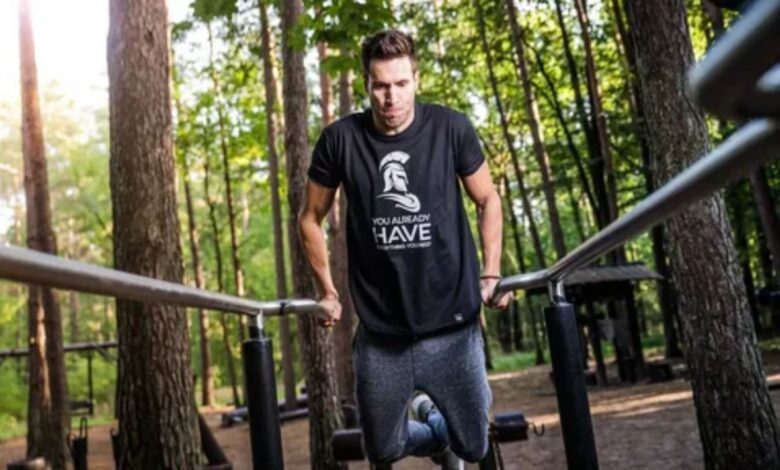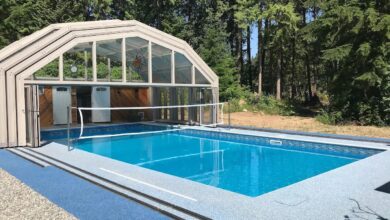Calisthenics Workout Plan: How to Stay Fit at Home Without a Gym

Staying fit doesn’t require an expensive gym membership—calisthenics offers a simple and effective way to build strength and endurance right at home. Using just your body weight, you can perform exercises like push-ups, squats, and planks to target multiple muscle groups while improving flexibility and mobility.
A well-structured calisthenics workout plan helps you stay consistent and achieve your fitness goals without the need for equipment. Whether you’re a beginner or looking to level up your routine, this guide will provide the best exercises and tips to keep you fit, strong, and energized—all from the comfort of your home!
Understanding Calisthenics and Its Benefits
Calisthenics is a form of strength training that involves using one’s body weight to perform exercises. This method has been around for centuries and remains popular due to its effectiveness in building muscle, enhancing flexibility, and improving overall health. Unlike traditional weightlifting, which relies on external weights, calisthenics focuses on natural body movements, making it safer and more sustainable in the long run.
Additionally, calisthenics promotes functional fitness, meaning that the exercises mimic everyday movements, improving overall coordination and agility. By practicing calisthenics regularly, individuals can develop a stronger core, better posture, and increased mobility, all of which contribute to long-term health and wellness.
How to Start a Calisthenics Workout at Home
Starting a calisthenics workout at home is simple and requires no equipment. Begin with basic exercises like push-ups, squats, and planks to build strength and endurance. Stay consistent, follow a structured routine, and gradually increase intensity for the best results.
Create a Dedicated Workout Space
Find a small area in your home with enough room to move freely. A yoga mat or carpeted floor can provide comfort for exercises like push-ups, planks, and stretches.
Focus on Fundamental Exercises
Start with basic movements like squats, push-ups, lunges, and planks. These exercises build strength, improve mobility, and create a solid foundation for more advanced calisthenics moves.
Follow a Structured Routine
Plan your workouts by setting a schedule and focusing on different muscle groups. A balanced routine includes upper body, lower body, and core exercises to ensure full-body development.
Track Your Progress and Stay Consistent
Keep a workout journal or use a fitness app to track reps, sets, and improvements. Consistency is key—stick to your routine, gradually increase intensity, and celebrate your progress along the way!
Full-Body Calisthenics Routine for Home Workouts
A well-balanced calisthenics workout plan should incorporate exercises that engage multiple muscle groups. A typical session may include push-ups, squats, lunges, dips, and planks, each performed for a set duration or number of repetitions. Push-ups are excellent for building upper body strength and engaging the chest, shoulders, and triceps. Squats target the lower body, strengthening the legs and glutes while improving stability. Lunges help in developing balance and coordination while toning the legs.
Dips are effective for working the triceps and chest, while planks strengthen the core and enhance overall endurance. As one progresses, incorporating variations such as diamond push-ups, Bulgarian split squats, and side planks can add intensity and challenge to the routine.
Progressing in Calisthenics Training
As with any fitness plan, progression is key to continual improvement and sustained results. Beginners should focus on mastering basic movements before attempting more advanced exercises. Increasing the number of repetitions, sets, or duration of each exercise is a simple yet effective way to advance in calisthenics. Additionally, incorporating explosive movements such as jump squats or clap push-ups can further enhance strength and agility.
Those looking for an added challenge can experiment with one-arm push-ups, pistol squats, and planche progressions. Consistency is crucial in calisthenics, and maintaining a structured workout schedule ensures steady progress. Recovery is equally important, as muscles require time to repair and grow stronger after each workout. Getting sufficient rest and proper nutrition plays a vital role in achieving fitness goals and sustaining long-term performance.
Staying Motivated and Consistent in Home Workouts
One of the biggest challenges of working out at home is staying motivated and consistent. Setting realistic goals and tracking progress can help maintain enthusiasm and commitment. Keeping a workout journal or using fitness apps can provide a sense of accomplishment and encourage consistency. Finding a workout partner or joining online fitness communities can also offer support and motivation.
Incorporating variety in workouts prevents boredom and keeps the routine engaging. Experimenting with different exercises, workout formats, and challenges can make training more enjoyable. Additionally, setting short-term and long-term goals provides a sense of purpose and achievement. Rewarding oneself for meeting fitness milestones can reinforce positive habits and enhance motivation.
Frequently Asked Questions
Can I build muscle with calisthenics workouts at home?
Yes, calisthenics can build muscle effectively by progressively increasing resistance, reps, and intensity. Advanced variations and time under tension techniques can enhance muscle growth.
How long does a home calisthenics workout take?
A typical calisthenics workout lasts between 30 to 45 minutes, depending on the intensity and structure. Shorter, high-intensity sessions can also be effective for improving strength and endurance.
Do I need any equipment for calisthenics training at home?
No equipment is necessary, but items such as a pull-up bar or resistance bands can add variety and difficulty to the exercises, helping to progress in strength and flexibility.
How often should I do calisthenics workouts?
For best results, aim for at least three to four calisthenics sessions per week. Adequate rest between workouts is essential to allow muscles to recover and grow stronger.
Can calisthenics help with weight loss?
Yes, calisthenics burns calories and increases muscle mass, boosting metabolism and aiding in fat loss. Combining workouts with a balanced diet enhances overall weight management.
Conclusion
Calisthenics offers an effective and accessible way to stay fit at home without the need for gym equipment. By following a structured workout plan and gradually progressing, individuals can build strength, improve flexibility, and enhance overall endurance. The key to success lies in maintaining consistency, focusing on proper form, and incorporating variety in workouts. Staying motivated and setting achievable fitness goals ensures long-term adherence to the routine.
With patience and dedication, anyone can experience the numerous benefits of calisthenics and achieve a healthier, stronger body. Prioritizing recovery and nutrition further supports muscle growth and prevents fatigue. Embracing calisthenics as a lifestyle fosters self-discipline and resilience, leading to sustainable fitness improvements. Whether a beginner or an experienced fitness enthusiast, calisthenics provides a rewarding way to stay active, fit, and healthy without relying on a gym.




